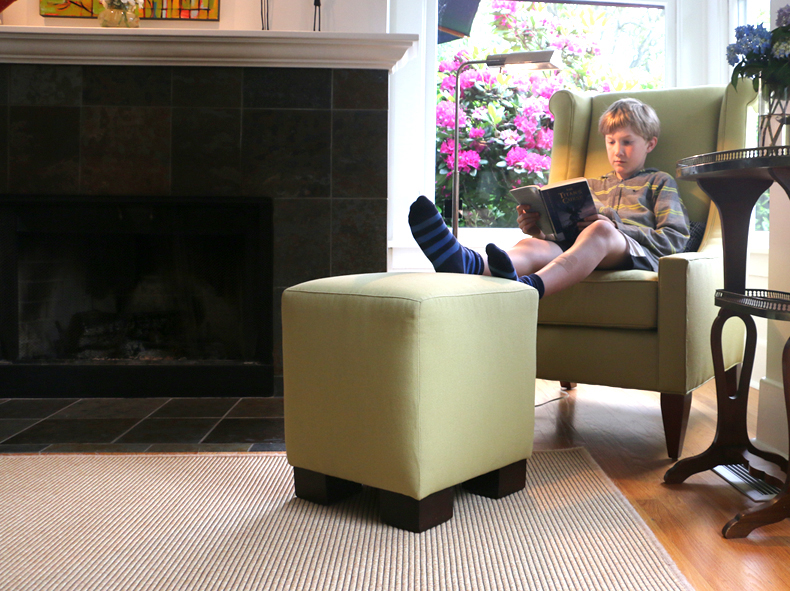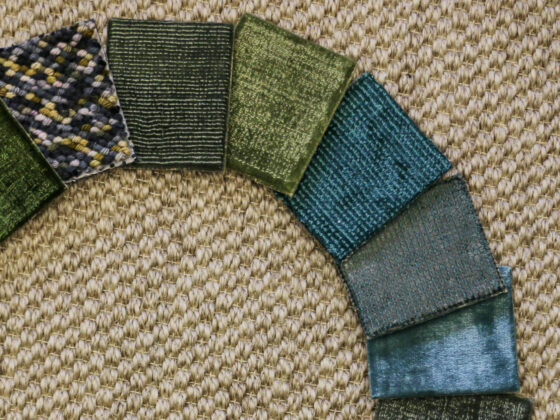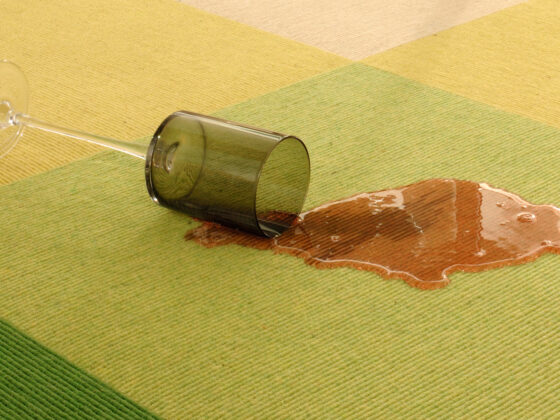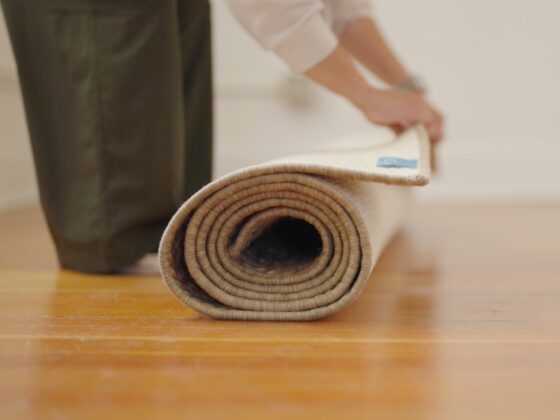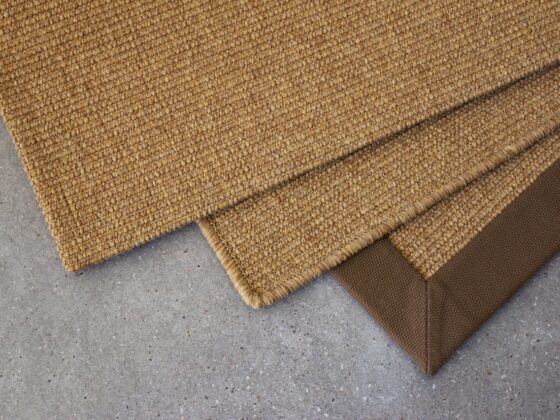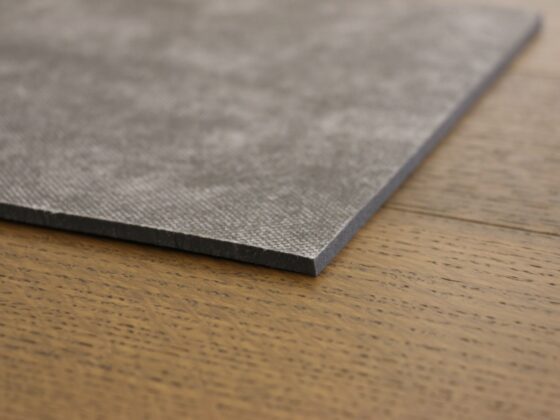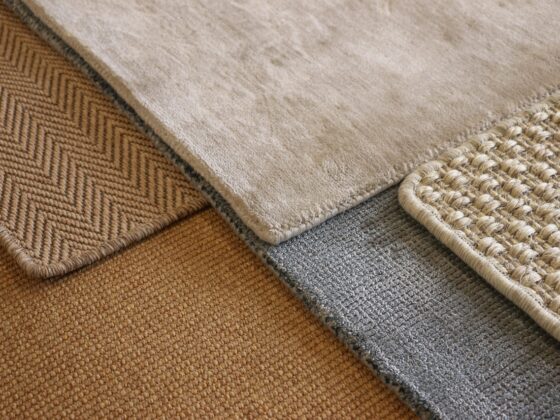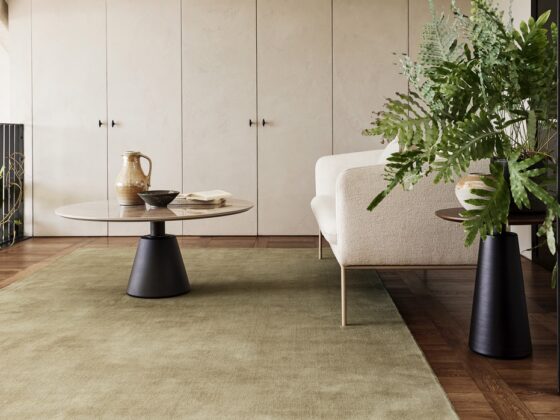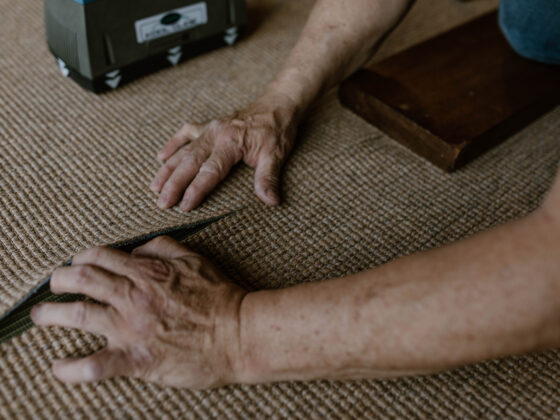Published January 2025 | Updated January 2025
Not quite sure what that word means? Our rug and carpet glossary is here to help you understand a few key carpet industry terms.
Backing
The backing on a rug or carpet refers to the material on the underside of a weave that holds the face yarns. A backing secures the yarns and gives the rug additional strength and dimensional stability.
Oftentimes, carpets have a double backing: the primary backing and the secondary backing. Primary backings, which secure the face yarns, might consist of jute, cotton or a synthetic material like polypropylene. Secondary backings are an outermost reinforcement and provide a barrier between the rug and a rug pad or floor. Secondary backings are usually made from cloth, latex or urethane.
Basketweave
A basketweave rug pattern is a basic criss-cross pattern with a checkered appearance. Also called a Panama weave, the warp and weft threads or yarns are interlaced, with one group (usually two or more) of threads going over and then under another group of threads.
Blend
When two or more materials are combined in a rug, it is called a blend. The most common natural fiber rug blend is sisal with wool. Wool is also blended with other materials like goat hair, linen or synthetic fibers. Synthetic rugs are often just one material, but they too can be a blend of different fiber types.
Border
A border is material that is applied to the edges of an area rug to keep the rug from unraveling or fraying and provides a decorative finish. It is also referred to as an applied border or a binding. A border can be cloth or serged. A “no binding” or “cut edge” option will appear on select products, especially modern vinyls. This means the product will have a cut, raw edge that will not unravel. No additional binding or border is needed.
Bouclé
A heavily textured loop pile rug. The loops can be tight and small, creating a smooth and minimalist weave, or the loops can be large and more chunky, creating a texturally rich weave.
Broadloom
Broadloom or wall-to-wall is carpet that has been woven on a wide loom and usually refers to buying raw material off the roll. Standard width for broadloom is 13 feet but can range between 6 feet and 16 feet wide. For broadloom that is wider than the standard 13′, browse our collection of Extra-Wide weaves.
Chevron
A zigzag pattern where blocks or rectangles whose edges are cut at a 45 degree angle meet point-to-point, creating a more seamless looking zigzag pattern. Chevron is more easily seen in tile or hardwood flooring than in a woven rug where weft and warp yarns are interlaced. Browse our Herringbone and Chevron collection.
Custom Rug
A custom rug is an area rug with unique dimensions as determined and designed by the customer to fit any space or room. With a custom rug, you are not limited to “standard” sizes. To begin designing your custom area rug, browse our weave collection and order samples to get started.
Face Weight
Face weight is the weight of the carpet’s fibers (the pile) per square yard and does not include the backing in the calculations. It is usually measured in ounces per square yard. (Total carpet weight is the pile plus the backing.) When comparing two carpets that are essentially the same (same fiber, same pile height, same style), a higher face weight usually indicates higher quality.
Flat Weave
A flat weave rug or carpet is created by interlacing the warp (vertical) and weft (horizontal) threads to create a loop pile rug that has a low pile height. No knots are used. Flat weaves are thinner and more minimalist than their hand-knotted or plush pile cousins. Almost all of our flat weaves have a backing to secure the weave structure and are not reversible like many kilim or dhurrie style flat weaves.
Handloomed
A handloomed rug has been woven on a loom that is operated or driven by hand or foot power. Handloomed wool rugs and carpet highlight the natural variabilities of wool and the unique qualities that only an artisanal product embodies, which is why they fetch a higher price point. Minor irregularities in yarn color, design, pattern repeat, texture are elemental to a handloomed product and are also what elevates it above other mass-produced wool rugs.
Herringbone
A zigzag pattern that brings together rectangles with ends cut at 90 degree angles that meet perpendicularly. Herringbone is more easily seen in tile or hardwood flooring than in a woven rug where weft and warp yarns are interlaced. Browse our Herringbone and Chevron collection.
Lapped Corner
A lapped corner refers to the style of a finished corner on a rug bound with cloth where the cloth binding lays over each other in the corner at a 90 degree angle.
LEED Points
LEED stands for Leadership in Energy and Environmental Design and is a green building rating system that has become an industry standard for excellence in sustainability. Building owners are awarded points based on compliance with different sustainability goals. Our SynSisal® collection is made from recovered and recycled waste and grants LEED points to any project in which it is installed.
Lightfastness
A product with high lightfastness means that the material or colors will resist fading when exposed to the sun’s ultraviolet rays. Performance of the product also depends on use and exposure: a product in direct sunlight for many months will fade more quickly than one that is not in direct sunlight or is behind UV-protective windows. Most flooring products use the ASTM (American Standard Test Measure): I being an excellent rating to V being a poor rating.
Mitered Corner
A mitered corner refers to the style of a finished corner on a rug bound with cloth where the cloth binding is joined and finished (sewn) in the corner at a 45 degree angle, similar to a picture frame. This is the most formal finish to a floor covering.
Mold & Mildew Resistance
A mold and mildew resistant product has been treated with a microbial additive that resists mold, mildew and algae growth. Mold and mildew growth damages materials, especially natural materials and in humid climates. Outdoor rugs or furniture that are mold and mildew resistant will look better over the course of their useful lifespan.
Overage
For wall-to-wall installations, overage refers to ordering about 10% more material than your square footage needs to be sure that you don’t come up short. Discuss overage with your installer—based on the layout needs of your space, your installer may recommend ordering more.
Pile
Pile and pile height are interrelated terms. Pile refers to the fibers or tufts of yarn that are visible on the top (or face) of your rug. These face yarns may be cut (shag), looped, or both. Pile height can be low or high and is the distance from the top surface of the yarns to the rug’s backing. A high pile rug, like shag carpeting, is taller and a low pile rug has shorter yarns and/ or tighter loops. Low pile rugs tend to be more durable and easier to maintain. High pile rugs are taller and have a coziness about them—just be sure any doors near a high pile rug can open and close easily. See also Face Weight.
Sample or Swatch
A sample or swatch is a small cutting or example of a material. Ordering samples of different rugs and colors helps determine which style is best for your needs.
Seam
A seam is where two edges of carpet are laid next to each other for a continuous look. Seams may be needed when creating a large area rug that exceed the width of the material or when installing carpet wall-to-wall. Proper seaming is very important when installing a flat weave carpet and using an experienced installer is advised. See our blog post Flat Weave Carpet Installation—Everything You Need To Know to learn more about seams.
Serged Edge
A serged edge is a continuous wrap of yarn around the edges of your rug that binds the fibers and keeps your rug from unraveling.
Shedding
Shedding or fluffing commonly occurs with new rugs and especially with wool rugs. It is a normal part of a rugs life cycle and does not indicate a defect. The loose fibers that shed are remnants from the manufacturing process and will typically settle down in about 6 months. When your wool carpet is new, consider gently vacuuming it, without the beater bar, frequently or even sweeping the rug to help clean up the loose fibers.
Solution Dyed
In carpeting, solution dyed means that the yarns used in weaving or creating carpet are dyed before being extruded and made into yarns. This process uses less water and chemicals than traditional processes and the color vibrancy and retention is strong.
Sprouting
Short, natural fibers from sisal, jute and seagrass may “sprout” during general handling and normal wear and tear. This is a normal. Clip sprouts off with scissors and do not pull. Trimming the sprouts will not hurt the integrity of the weave since the fibers are attached to a backing.
Stain Resistance
Stain resistance refers to a product’s ability to resist or prevent stains or spills from settling into the fabric or material. Stain-resistant fabrics or materials are coated with a finish that resists liquid penetration. Nevertheless, Stain resistance does not mean stain proof. but it does mean high performance, stain-resistant fabrics will outshine non-treated fabrics.
Stair Runner
A stair runner is a rug or carpet that is installed on your stairs and usually runs the full length of your staircase, from the top step to bottom step, and may extend the full width of each step (wall to wall) or have a border. Check out our Stair Runner resource page to learn more.
Tiger Eye
A tiger eye pattern or weave is constructed of thick loops, symmetrically offset to bring forward an organic, textural quality that is unique to its chunky texture.
Tufted
Tufted refers to a construction style of carpet wherein the yarn or thread is inserted, pulled through, stitched or looped through a primary backing material. A secondary backing is adhered to the backside of the primary backing to create a stable foundation. Tufted rugs can be made by hand but are primarily made by a machine.
UV-stabilized
A product that is UV-stabilized means it has an added stabilizer that protects the product from degradation caused by ultraviolet (sun) light. Prolonged exposure to sunlight can alter colors or lead to material breakdown. Look for “UV-stabilized” in the product specifications, especially for polypropylene, poly silk or vinyl outdoor rugs.
UV-resistance
UV-resistance is another way of saying a product is manufactured from UV-stabilized materials and will resist UV-light damage. With excessive or long term sun exposure, all products will fade over time, but a UV-resistant product will outperform any product not treated with UV-stabilizers.
VOC
Volatile Organic Compounds (VOCs) are chemicals that “off-gas” or release into the air, potentially having a negative impact on our health. VOCs are used in many everyday products like paint, cosmetics, toys, furnishings, carpets and more. Indoor air quality is vitally important, so look for low or no VOC flooring options made with wool or other natural fibers. Our Pure Wool, Monasch or Tretford collections all help improve indoor air quality and for a synthetic, sisal-look option, look no further than SynSisal®.
Warp
In a woven carpet, the warp refers to the yarns that run lengthwise, or from top to bottom.
Weft
In a woven carpet, the weft refers to the yarns that are woven widthwise, or from left to right, into the warp yarns.
Woven
Woven is the traditional method for making rugs and carpet on a weaving loom. The yarn or pile is woven individually and simultaneously with the backing threads which creates a uniform structure with excellent durability and beautiful designs. A more time-intensive process, woven carpets and rugs can last a lifetime if cared for properly.

